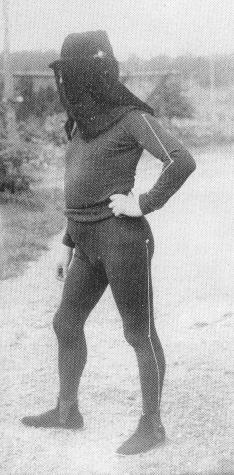is an action which involves space and time and, strictly speaking, belongs to the fourth dimention- something that does not at first sight seem an appropriate category for the stationary world of two and three dimensional art. The ways that artists "capture" the fourth dimension was, and still is, the subject of much discussion.
Motion and emotion
both derive from the Italian word moto. Physical motions (walking people, galloping horses, postures, distortion, etc.) as well as mental emotions such as sadness, joy, love and anger. If emotions were depicted effectively through motion the viewer is "moved" by the artwork.
MAREY, Etienne Jules
Marey started his
career as an assistant surgeon in 1855, and specialised in human and animal
physiology. In 1867 he became Professor of Natural History.
He was the inventor of the
"chronophotograph" (1887) from which modern cinematography was
developed. Some in fact see Marey, rather than the Lumière brothers,
as the true father of cine photography. 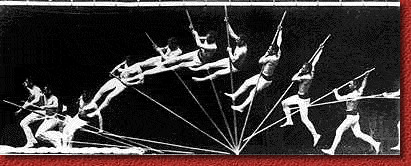
Whereas Muybridge (with whom Marey was frequently in contat) had used a number of cameras to study movement, Marey used only one, the movements being recorded on one photographic plate. Characteristic of his pictures were his studies of the human in motion, where the subjects wore black suits with metal strips or white lines, as they passed in front of the black backdrops.
For those who think slow motion photography is relatively new, Marey also invented a slow motion camera in 1894, which took pictures at the rate of 700 per second!
The
AVA Project
Motion
Analysis
MUYBRIDGE, Eadweard
b. 9 April 1830; d. 8 May 1904 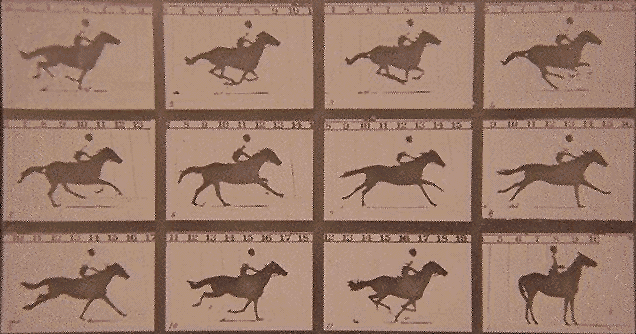
Edward James Muggeridge was born in Kingston on Thames. In his early twenties he went to live in America, gaining a reputation for his landscape photographs of the American West. As he used the collodion process, like other travel photographers he would have needed to take with him all the sensitising and processing equipment, as all three processes of sensitisation, exposure and processing needed to be done while the plate was still wet.
During the late sixties and early seventies he made some two thousand pictures, exposing negatives size 20x24 inch. Though he is not given due acclaim, many his landscape studies rank with the best.
However, Muybridge's main claim to fame (apart from being tried and acquitted for the murder of his wife's lover!) was his exhaustive study of movement. Just about this same time the French physiologist Etienne Marey was studying animal movement, and his studies began to suggest that a horse's movements were very different from what one had imagined. One of the people who became aware of this research was Leland Stanford, a former governor of California, who owned a number of race horses. Stanford was determined to find the truth about this. It is said that he bet a friend that when a horse gallops, at a particular point all four feet are off the ground simultaneously. To prove his case he hired Muybridge to investigate whether the claim was true.
By the 1870s lengthy exposures had been reduced to a minimum, and thus it became possible for photography to begin to extend one's vision of reality. It took a little time, however, for Muybridge to perfect a way of photographing which would supply the answer, for the Collodion process was rather slow.
Returning to his movement experiments, a few years later Muybridge was able to photograph a horse galloping, using twenty four cameras, each triggered off by the breaking of a trip-wire on the course. He not only proved Leland right, but also showed that, contrary to what painters had depicted, a horse's feet are not, as hitherto believed, outstretched, as if like a rocking- horse, but bunched together under the belly. This discovery caused considerable controversy, but eventually became more generally accepted.
Muybridge's studies are very comprehensive, and include some detailed studies of men and women walking, running, jumping, and so on.
Time, change and sequence -
Egyptian art shows the passage of time by serializing the story in continuous sections - comic strip style- one on top of the other.

In medieval art a well known device of placing pictures next to one another - showing the before and after: Diptych (two panels) or triptych (three panels) were used where the story could be read in continuity: a sermon in pictures.
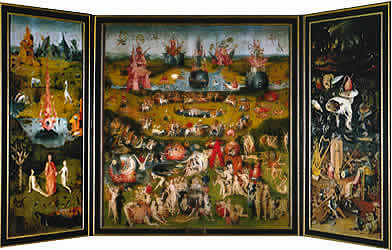
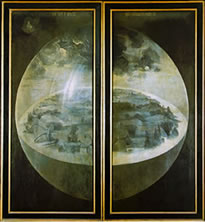
Garden of Earthly Delights (opened and closed)
by Hieronymus Bosch c1510-15
More
Triptychs
Seriality or making a work in serval sections is an effective way of moving a story along. Roy Lichtenstein (b 1923) uses serials derived from comic books.
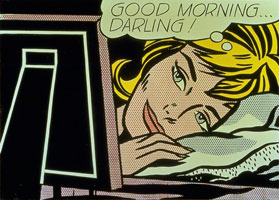
Continuous line is also a way to attract the viewer's eye - curved lines suggesting movement. (motion blur).
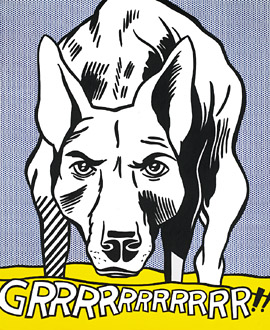
Still images or drawings can
be made to animate using registration of imagery and persistance of vision.
See the work of South African artist/animator William Kentridge
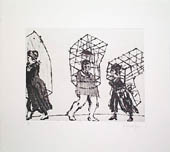
http://www.goodman-gallery.com/mainakent.htm
http://www.awn.com/mag/issue3.7/3.7clips/9810kentridge.mov
The viewer can be stationary or moving physically amongst the artwork. (Janet Cardiff, mazes, etc.)
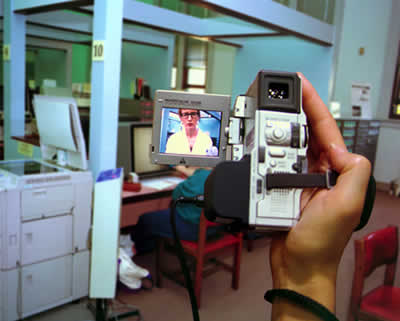 Janet Cardiff
Janet Cardiff
Art in Technological Times:http://www.stretcher.org/archives/reviews/010101/010101.html
see: still motion site IDimaging\movement.html
